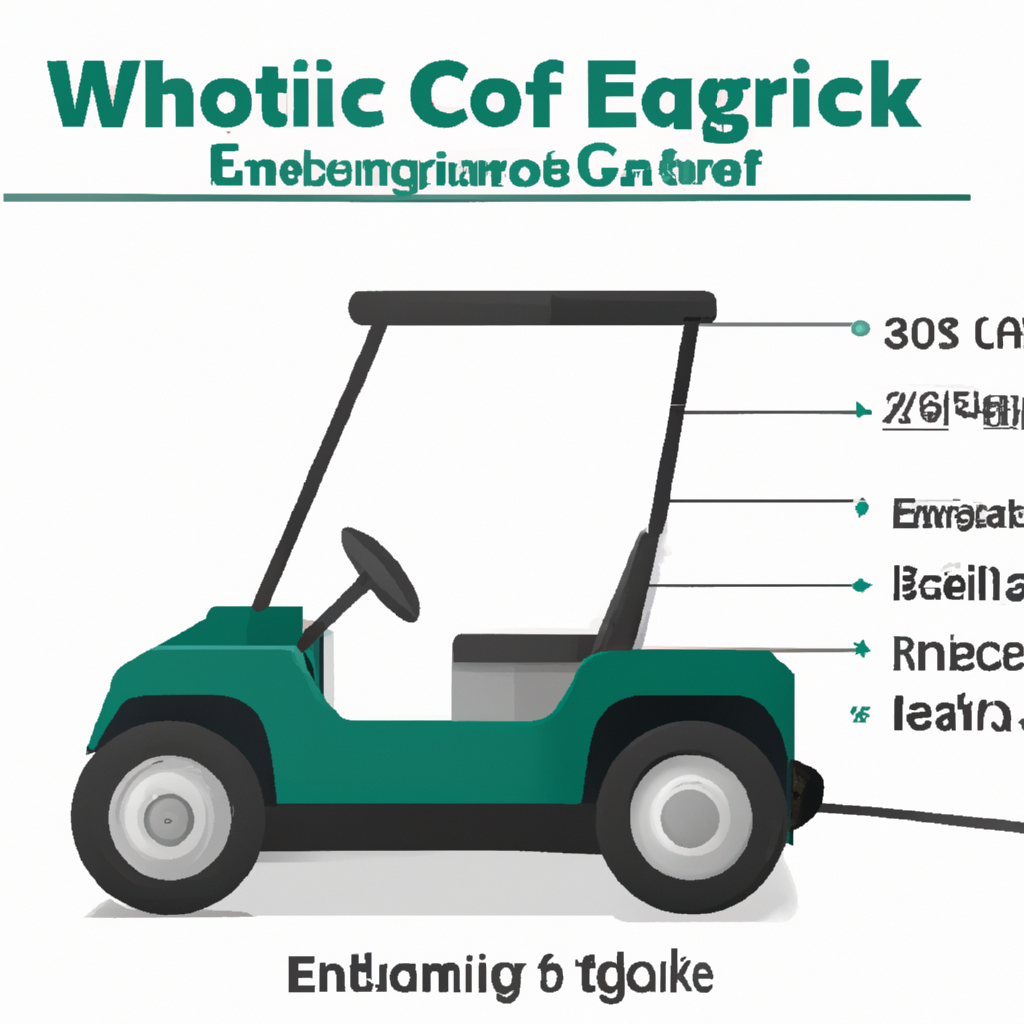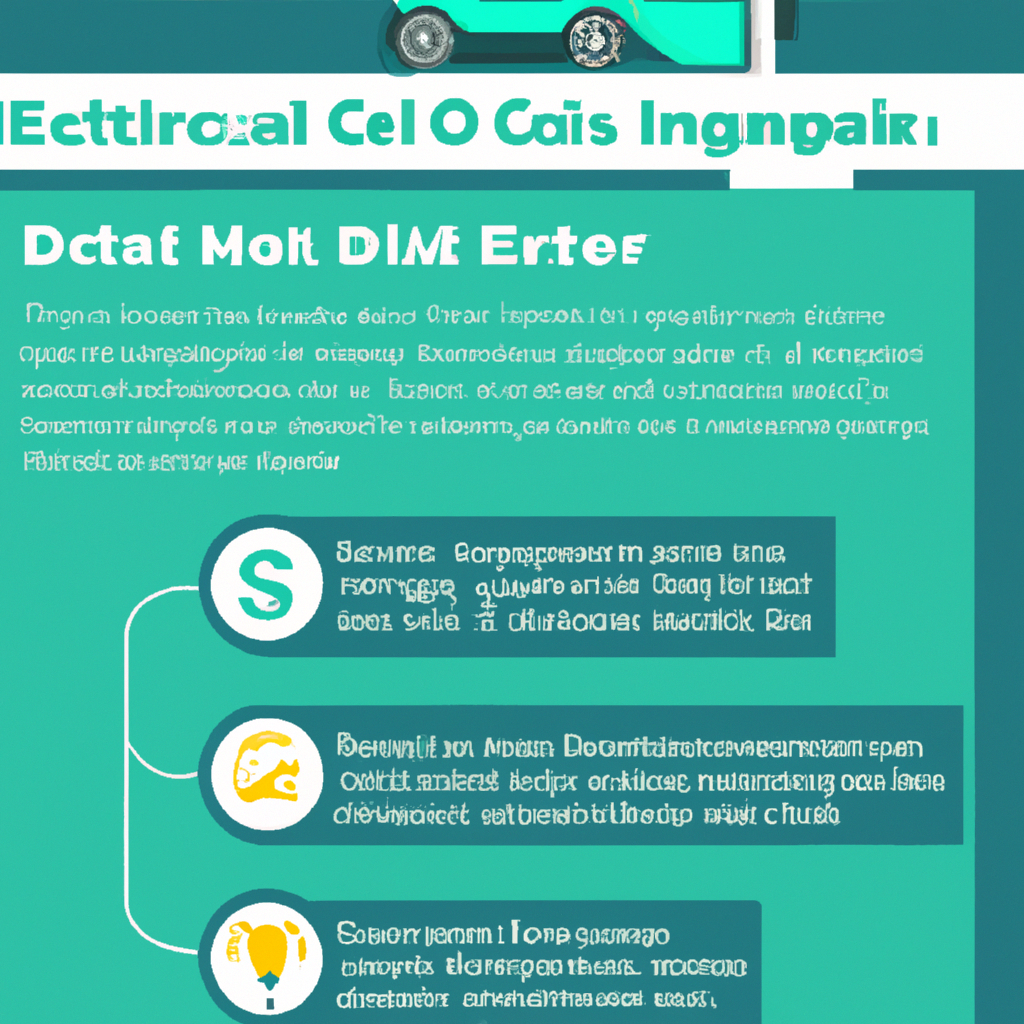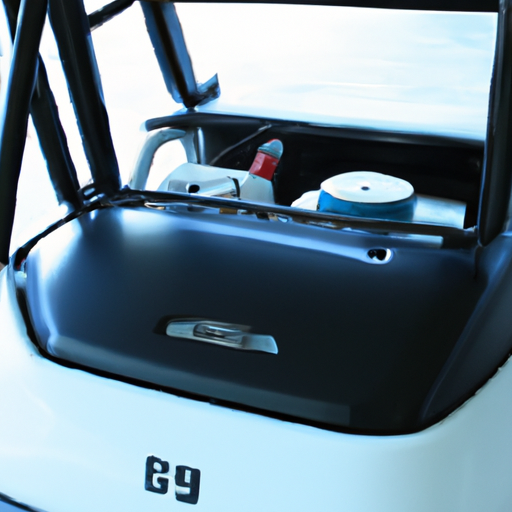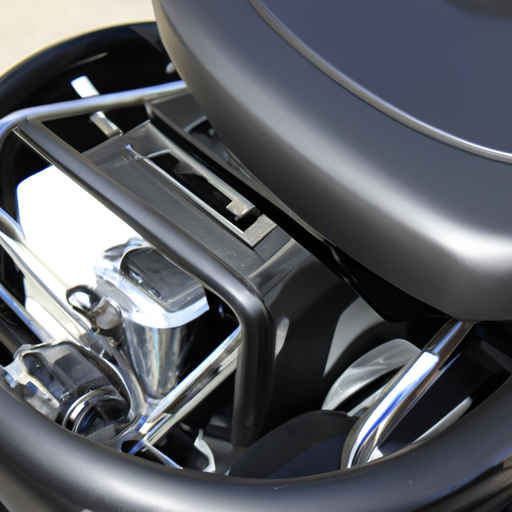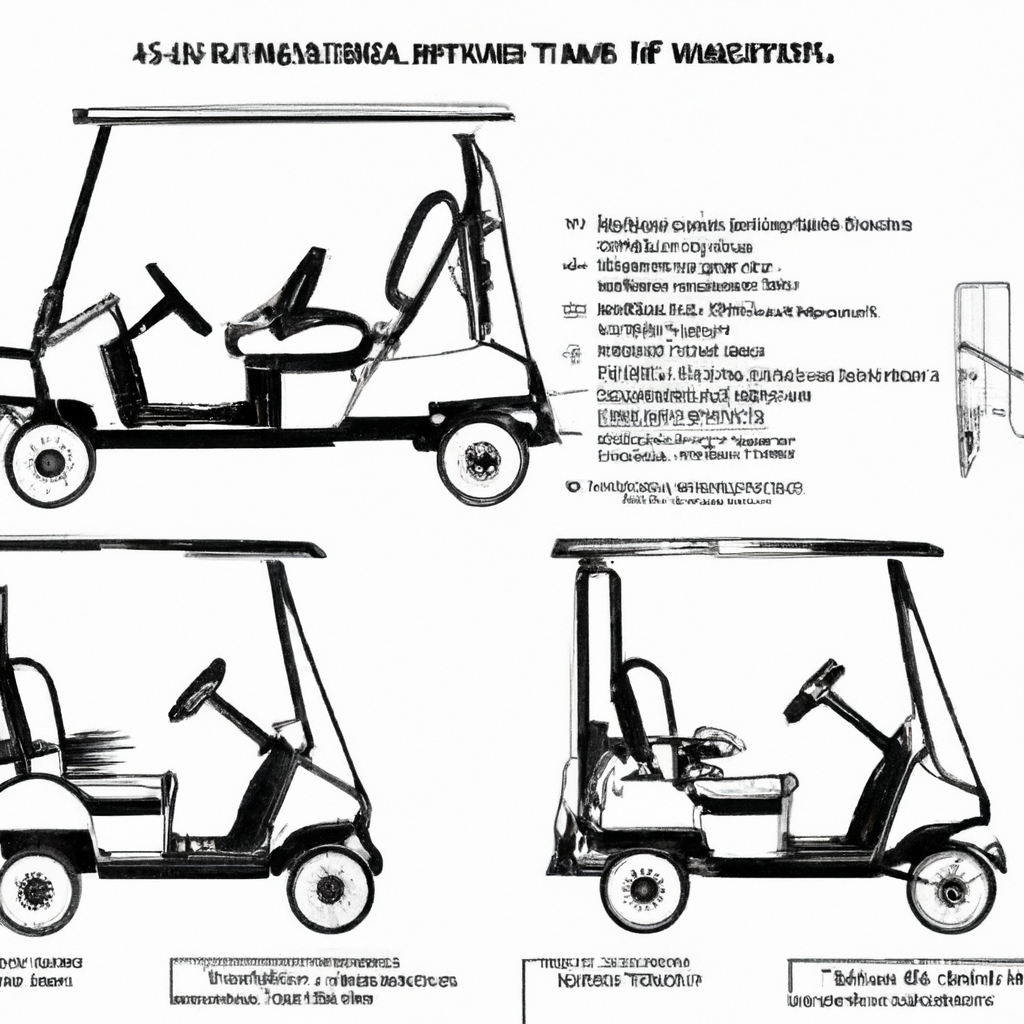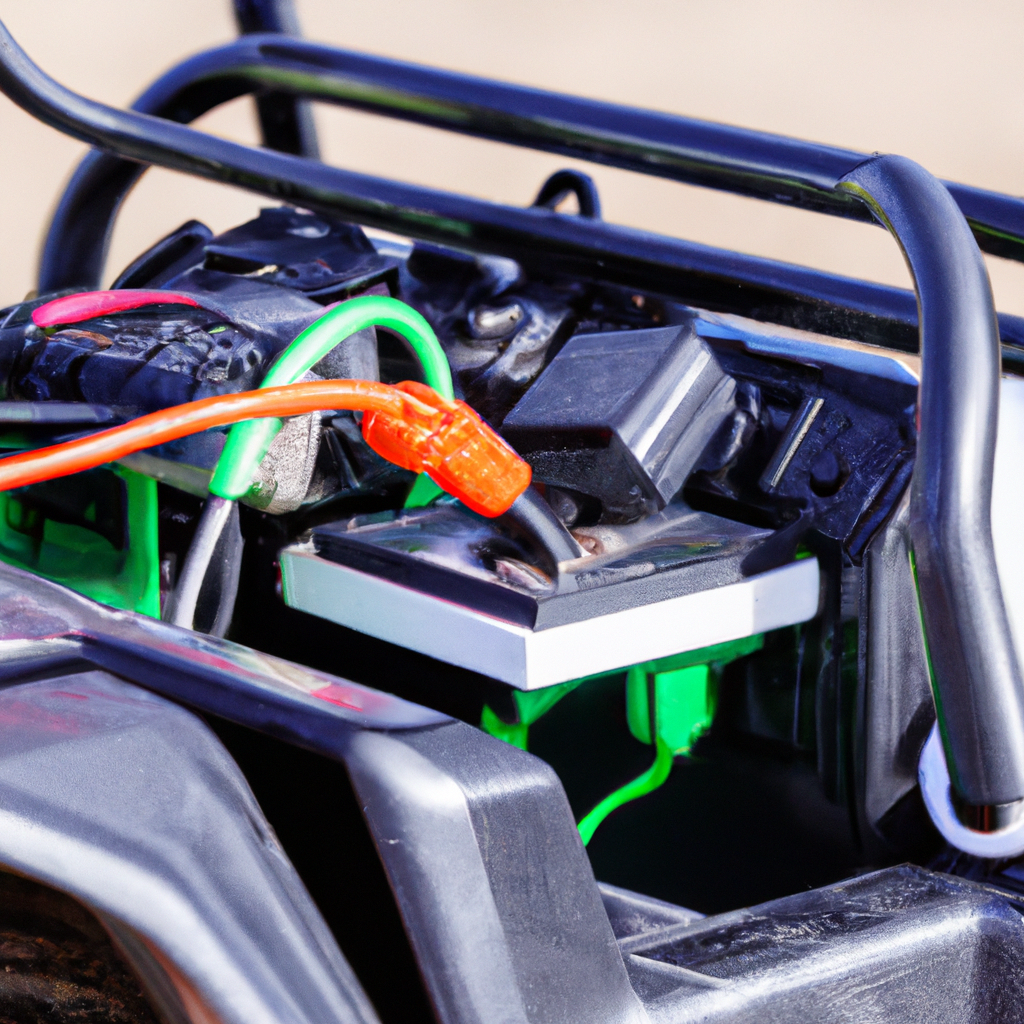Are you curious about the weight of an electric golf cart? Whether you are a golf enthusiast or simply interested in the workings of these convenient vehicles, understanding their weight can provide valuable insights. Electric golf carts are known for their eco-friendliness and quiet operation, but have you ever wondered just how much they weigh? In this article, we will explore the weight of electric golf carts, shedding light on this fascinating aspect of these popular vehicles. So, let’s jump right in and discover the weighty world of electric golf carts!

Understanding Electric Golf Carts
What is an electric golf cart?
An electric golf cart, also known as an electric golf buggy or electric golf trolley, is a small vehicle designed to transport golfers and their equipment around a golf course. These carts are powered by an electric motor and rely on rechargeable batteries for their operation. Electric golf carts have become the preferred choice for many golfers due to their quiet and eco-friendly nature, as well as their convenience and ease of use.
How do electric golf carts work?
Electric golf carts operate on a simple principle: they convert electrical energy from the batteries into mechanical energy to power the vehicle. The electric motor, controlled by an accelerator pedal, provides the necessary torque to move the golf cart forward or backward. The direction of the cart is controlled by a switch or lever. The power to the motor is supplied by a set of rechargeable batteries, which can typically be charged overnight using a standard electrical outlet. Some electric golf carts also feature regenerative braking, where the energy created during braking is used to recharge the batteries, increasing overall efficiency.
Why are electric golf carts popular?
Electric golf carts have gained popularity in recent years due to a number of factors. Firstly, they are much quieter than their gas-powered counterparts, which creates a more pleasant and peaceful atmosphere on the golf course, allowing golfers to focus on their game without distractions. Secondly, electric golf carts produce zero emissions, making them a more environmentally friendly choice compared to gas-powered carts. The lack of harmful fumes and pollutants not only benefits the golfers and the course, but also contributes to the overall environmental sustainability. Additionally, electric golf carts require less maintenance and have lower operating costs than gas-powered carts, making them more cost-effective in the long run. Finally, the simplicity and ease of use of electric golf carts make them an attractive option for golfers of all ages and skill levels.
Factors Affecting the Weight of Electric Golf Carts
When considering the weight of an electric golf cart, several factors come into play. Understanding these factors is crucial in determining the overall weight of the cart and its impact on performance, battery life, and transportation.
Battery Type and Capacity
One of the primary factors affecting the weight of an electric golf cart is the type and capacity of the batteries used. Electric golf carts typically use deep-cycle batteries, which are designed to provide a steady amount of power over an extended period. These batteries can vary in weight depending on their technology, with lithium-ion batteries being lighter than traditional lead-acid batteries. Additionally, the capacity of the batteries, measured in ampere-hours (Ah), also influences the weight of the cart. Higher capacity batteries usually result in increased weight due to the larger amount of stored energy.
Frame and Chassis
The frame and chassis of an electric golf cart contribute significantly to its weight. The materials used in construction, such as steel or aluminum, can vary in density and strength, affecting the overall weight of the cart. Additionally, the structural design and weight distribution within the frame and chassis play a role in determining the weight. A well-designed frame with proper weight distribution can enhance stability and performance while minimizing unnecessary weight.
Seating Capacity
The number of seats available in an electric golf cart directly impacts its weight. Standard seating options usually accommodate two or four passengers, while extended seating options can accommodate more. As the seating capacity increases, so does the weight of the cart. It is essential to consider the intended use and passenger requirements when selecting the appropriate seating capacity, as the added weight can affect the cart’s maneuverability and battery life.
Additional Features and Accessories
The inclusion of various additional features and accessories can also contribute to the overall weight of an electric golf cart. Golf bag holders, storage compartments, and club racks are common additions that add convenience and functionality to the cart but also increase its weight. Furthermore, accessories like roofs, windshields, and other exterior additions can provide protection from the elements but also add to the cart’s weight. Safety features and equipment, such as headlights, taillights, and seat belts, increase the overall weight but are essential for ensuring the safety of the passengers. Finally, customizations and personalization options, including unique paint jobs or deluxe seating materials, can add aesthetic appeal but also result in additional weight.
Battery Type and Capacity
Different types of golf cart batteries
Electric golf carts commonly use two types of batteries: lead-acid batteries and lithium-ion batteries. Lead-acid batteries are the traditional and more affordable option. They are reliable and capable of providing sufficient power, but they are also heavier compared to lithium-ion batteries. On the other hand, lithium-ion batteries are lighter, have a longer lifespan, and require less maintenance. While lithium-ion batteries may be more expensive upfront, their weight-saving properties can make them an attractive choice for those looking to reduce the overall weight of their electric golf cart.
Understanding battery capacity and power
Battery capacity and power play a crucial role in the operation and overall weight of an electric golf cart. The capacity of a battery refers to the amount of energy it can store and is typically measured in ampere-hours (Ah). A higher capacity battery can provide more power and have a longer range, but it also adds weight to the cart. It is important to strike a balance between battery capacity, weight, and the specific needs of the golf cart to ensure optimal performance.
Impact of battery weight on the overall cart weight
The weight of the batteries directly affects the overall weight of an electric golf cart. As mentioned earlier, lithium-ion batteries are lighter than lead-acid batteries with the same capacity. By opting for lithium-ion batteries, golf cart owners can significantly reduce the weight of their carts without compromising on power or range. The lighter weight not only improves maneuverability but also reduces wear on tires, suspensions, and other components, potentially extending the cart’s lifespan. However, it is crucial to ensure that the chosen battery type and capacity meet the specific requirements of the golf cart and the intended usage.

Frame and Chassis
Materials used in construction
The materials used in the construction of an electric golf cart frame and chassis can vary and have a significant impact on the overall weight. Steel is a common choice for its strength and durability, but it is also heavier compared to other materials. Aluminum, on the other hand, is lightweight and corrosion-resistant, making it an attractive option for reducing weight. Manufacturers often use a combination of materials to strike a balance between strength, weight, and cost. Choosing a cart with the appropriate frame and chassis material is essential in finding the right balance between weight and structural integrity.
Structural design and weight distribution
Apart from the materials used, the structural design and weight distribution within the frame and chassis significantly influence the weight of an electric golf cart. A well-designed frame offers optimal strength while minimizing unnecessary weight. Additionally, proper weight distribution ensures better stability and handling, resulting in enhanced performance on the golf course. The position and placement of the batteries, motor, controller, and other components within the frame can affect weight distribution. Paying attention to these design aspects ensures that the cart performs optimally without excessive weight.
Seating Capacity
Standard vs. extended seating options
Electric golf carts come with varying seating capacity options to accommodate different numbers of passengers. Standard seating options are typically designed to accommodate two passengers, although some models offer room for up to four. Extended seating options are available for those who require room for additional passengers. These extended models can seat up to six or eight individuals comfortably. When considering the seating capacity, it is important to keep in mind that increased seating capacity will result in added weight to the cart.
Impact of increased seating on weight
As the seating capacity of an electric golf cart increases, so does the weight. The addition of seats and the necessary structural support to accommodate extra passengers contribute significantly to the overall weight of the cart. It is essential to evaluate the intended use and passenger requirements before opting for extended seating options. While they offer more passenger space, the added weight can affect the cart’s maneuverability, battery life, and overall performance. Striking a balance between seating capacity and weight is crucial for optimal cart operation.
Additional Features and Accessories
Golf bag holders and storage compartments
Many electric golf carts come equipped with golf bag holders and storage compartments to enhance convenience and utility. These features allow golfers to securely store their golf bags and other belongings while enjoying their game. However, it is important to note that these additional features can contribute to the weight of the cart. The weight of the golf bags themselves, along with any stored items, adds to the overall load of the cart. While golf bag holders and storage compartments are undoubtedly beneficial, it is necessary to consider their impact on weight and balance during usage.
Roofs, windshields, and other exterior additions
Electric golf carts offer various exterior additions, such as roofs and windshields, to provide protection from the elements. These additions can be particularly useful during inclement weather conditions or for those seeking additional comfort. However, it is important to keep in mind that these accessories add weight to the cart. The materials used in the construction of these features, such as glass or polycarbonate for windshields, can significantly contribute to the overall weight. Balancing the benefits of these additions with the increased weight they bring is essential when selecting the right accessories for an electric golf cart.
Safety features and equipment
Safety features and equipment are essential for maintaining a secure and protected environment for both the driver and passengers. Electric golf carts often come equipped with headlights, taillights, turn signals, mirrors, and seat belts to ensure proper safety precautions are in place. While these features increase the overall weight of the cart, they play a vital role in preventing accidents and injuries. The added weight from safety features should be considered a necessary trade-off for ensuring a safe golf cart experience.
Customizations and personalization
Electric golf carts offer a wide range of customizations and personalization options, allowing owners to tailor their carts to their unique preferences and styles. While these customizations can enhance the aesthetics and individuality of the cart, they can also contribute to its weight. Custom seating materials, unique paint jobs, or additional decorative elements all add extra weight to the cart. Considering the desired customizations and their impact on weight is important to strike the right balance between personalization and performance.
Comparing Weights: Electric vs. Gas Golf Carts
Average weight of an electric golf cart
The average weight of an electric golf cart can vary depending on various factors, including battery capacity, seating capacity, and additional features. However, on average, electric golf carts typically range between 900 to 1,200 pounds (408 to 544 kilograms). The weight can increase further with extended seating options or additional accessories.
Average weight of a gas-powered golf cart
Gas-powered golf carts generally weigh more than electric carts due to the added weight of the gas engine and fuel tank. On average, gas golf carts weigh between 950 to 1,500 pounds (431 to 680 kilograms). The weight of gas-powered carts can vary depending on factors such as engine size, seating capacity, and additional features.
Differences in weight between electric and gas carts
When comparing electric and gas golf carts, it is evident that electric carts tend to be lighter than their gas-powered counterparts. The absence of a gas engine and fuel tank in electric carts contributes to their reduced weight. Electric carts are generally more lightweight, making them easier to maneuver and resulting in less strain on the course. The lighter weight of electric carts can also have a positive impact on battery life, as less power is required to move the cart. However, it is essential to balance the benefits of a lighter electric cart with the specific requirements and preferences of the golfer.
Benefits and Drawbacks of Lighter Electric Golf Carts
Advantages of lighter electric golf carts
Lighter electric golf carts offer several advantages over their heavier counterparts. Firstly, their reduced weight enhances maneuverability, allowing golfers to navigate the course with greater ease. Maneuvering through tight turns or rough terrain becomes less of a challenge when operating a lighter cart. Secondly, lighter carts exert less pressure on the course grounds, which can minimize wear and tear on the turf, preserving the pristine condition of the golf course. Additionally, the reduced weight of the cart can result in less energy consumption, potentially extending the battery life and reducing the frequency of recharging. Lighter electric golf carts are also often easier to transport, whether it be on a trailer or within the confines of a storage area, making them more convenient for those who frequently travel with their carts.
Potential drawbacks of lighter carts
While lighter electric golf carts offer various benefits, there are also potential drawbacks to consider. The reduced weight may have some trade-offs in terms of stability and traction, particularly on hilly or uneven terrain. A lighter cart may be more susceptible to tipping or losing grip, especially during aggressive or abrupt maneuvers. It is important to strike a balance between weight reduction and maintaining stability and safety. Additionally, lighter carts may have limited carrying capacity, potentially restricting the amount of equipment or personal belongings that can be transported. Balancing the advantages and disadvantages of a lighter cart is crucial to ensure an optimal golfing experience.
Importance of Weight Considerations
Impact on performance and battery life
Weight considerations play a vital role in the performance and battery life of electric golf carts. A well-balanced and appropriately weighted cart can provide better acceleration, maneuverability, and stability on the golf course. Excessive weight can hinder these aspects, resulting in reduced performance and handling. Additionally, the weight of the cart has a direct impact on the battery life. Heavier carts require more power to operate, resulting in increased energy consumption and potentially shorter battery life. By carefully considering the weight of the cart, golfers can optimize both the performance and longevity of their electric golf carts.
Transportation and storage considerations
Weight considerations are also significant when it comes to transporting and storing electric golf carts. Lighter carts are generally easier to load, unload, and transport on trailers or within vehicles. They require less physical effort and reduce the strain on towing vehicles and equipment. Additionally, lighter carts are often more manageable to store in garages, sheds, or golf cart storage facilities. The reduced weight simplifies the process of moving the cart into and out of storage, making it more accessible for regular maintenance and usage.
Effects on the golf course
The weight of an electric golf cart has an impact on the golf course itself. Lighter carts exert less pressure on the turf, reducing the risk of damage, particularly on delicate or wet grounds. By minimizing the weight on the course, golfers can contribute to the preservation and upkeep of the golf course, ensuring a high-quality playing experience for themselves and others. Keeping the course in excellent condition benefits not only the golfers but also the golf course management and the overall environment.
Conclusion
Understanding the factors that influence the weight of electric golf carts is crucial for golfers and enthusiasts alike. From battery type and capacity to frame materials and seating options, each component contributes to the overall weight of the cart. Lighter electric carts offer advantages such as increased maneuverability, reduced course wear, improved battery life, and easier transport and storage. However, it is important to find the right balance between weight reduction and maintaining stability, safety, and performance. By carefully considering weight considerations, golfers can select an electric golf cart that best suits their needs, ensuring an enjoyable and efficient golfing experience.
